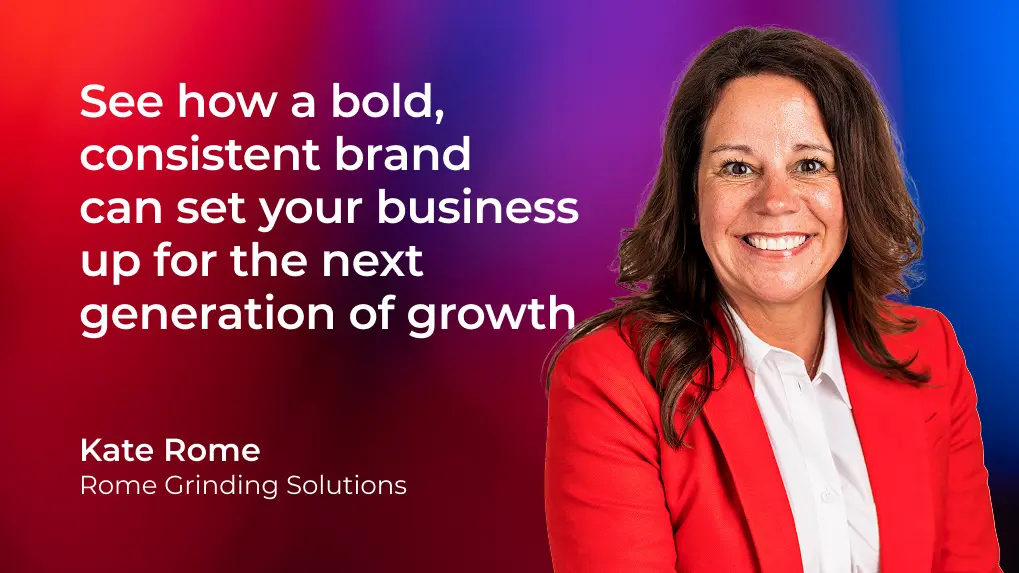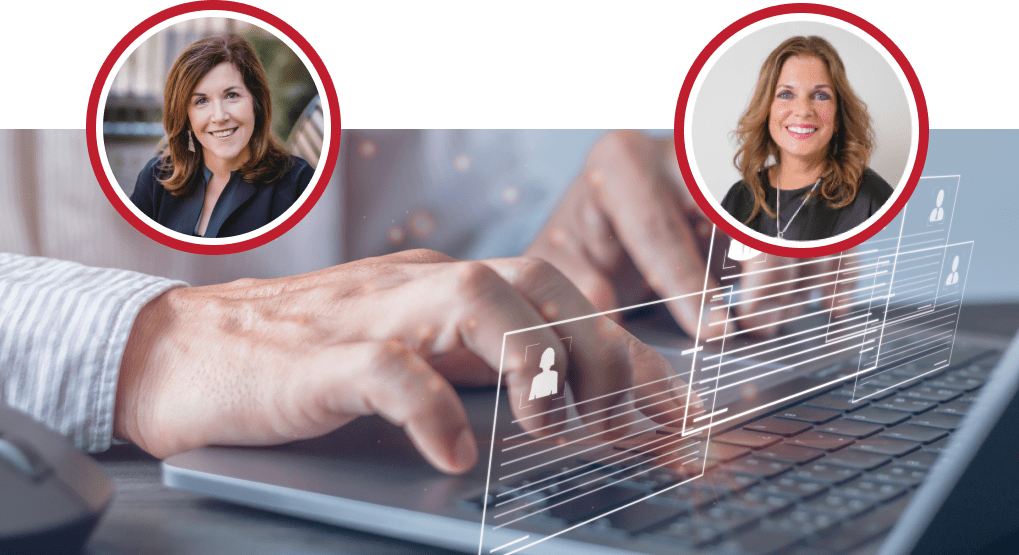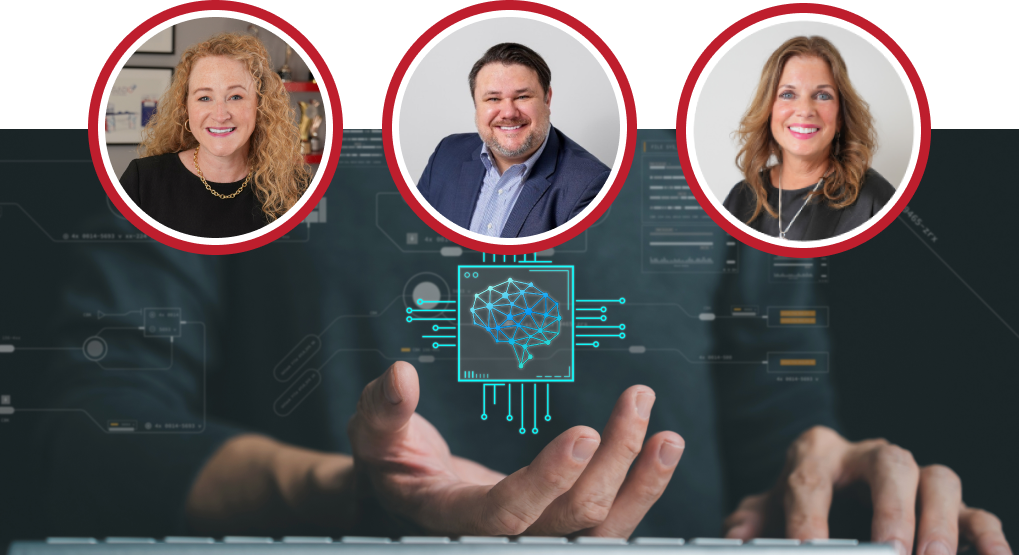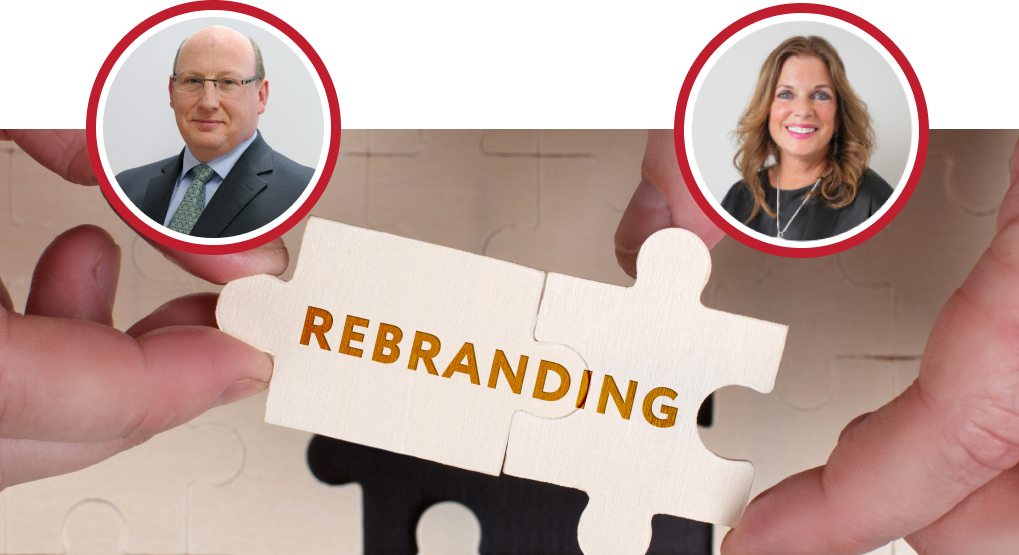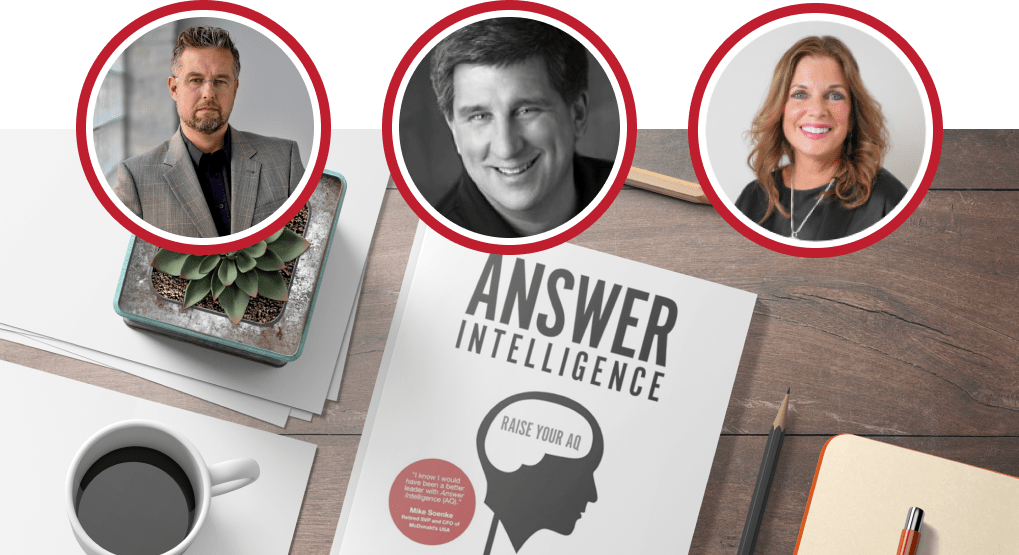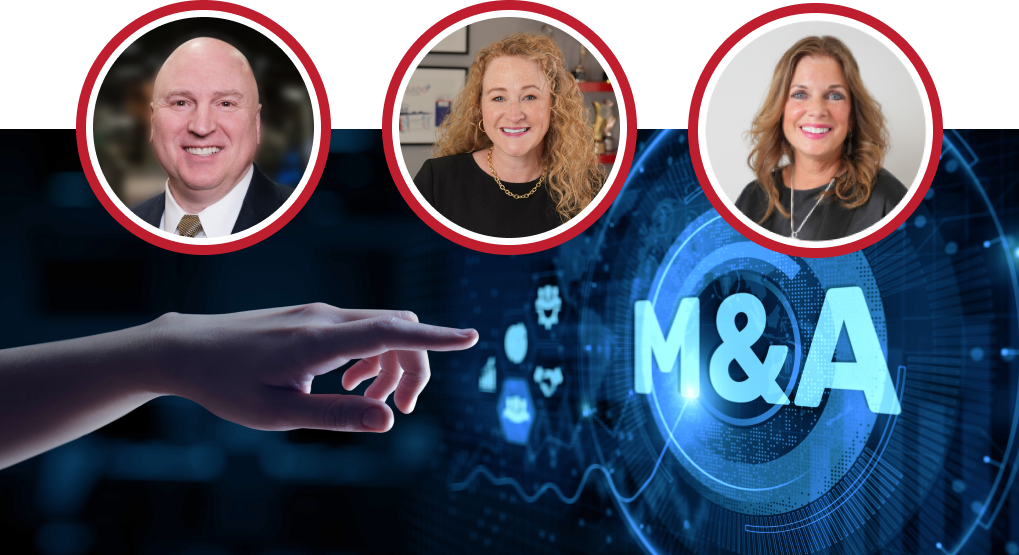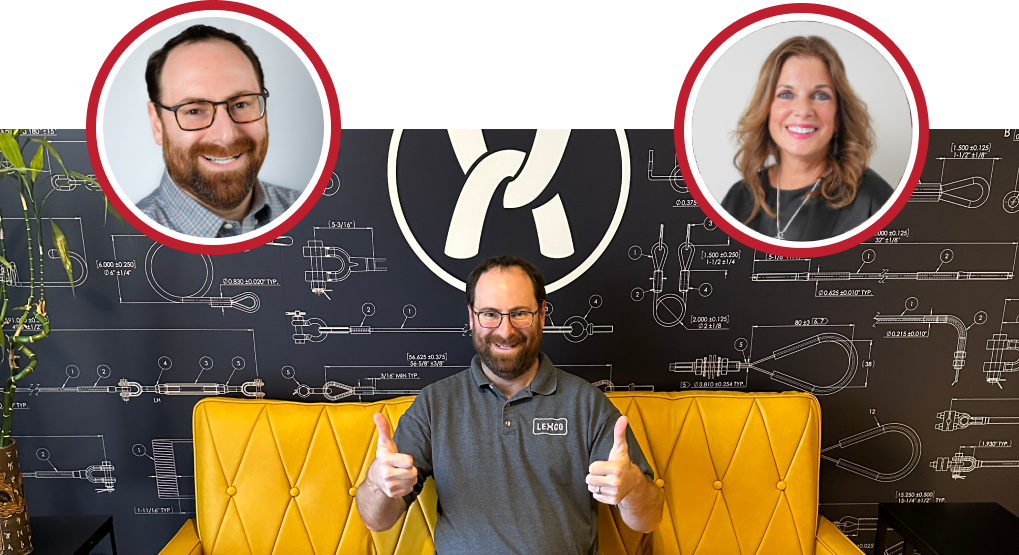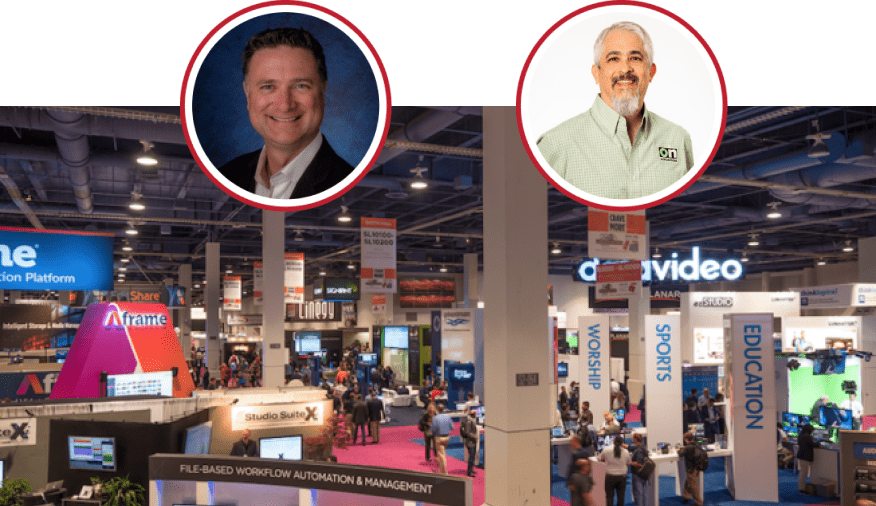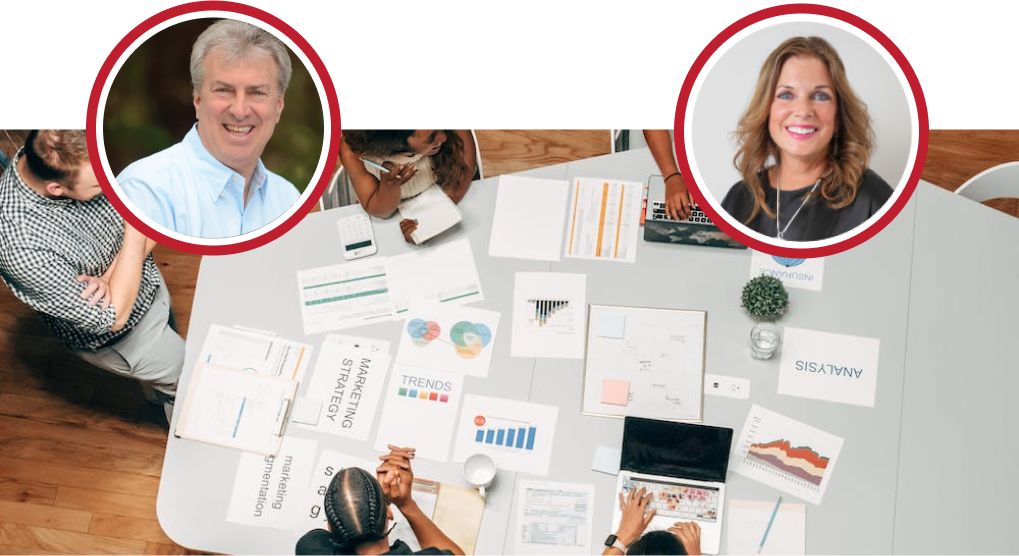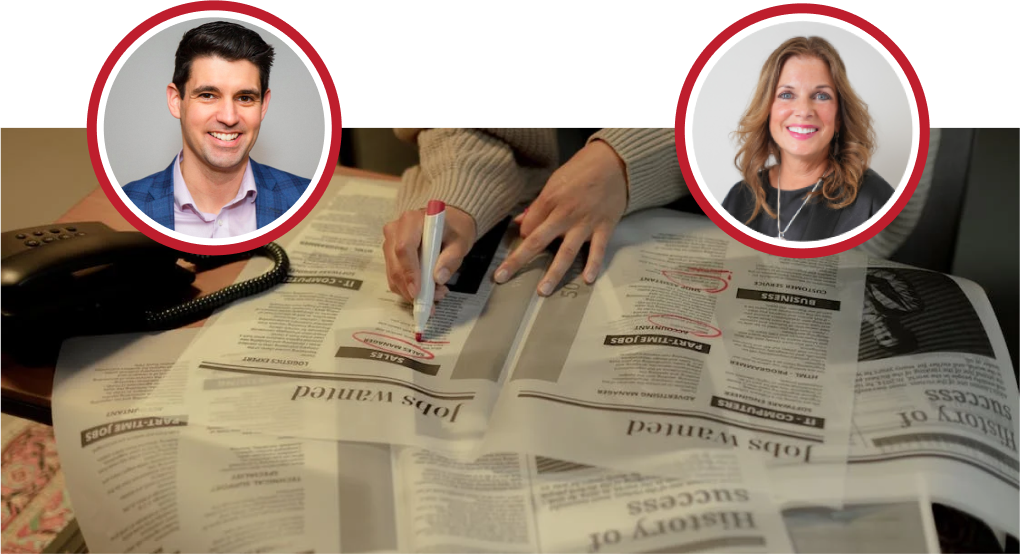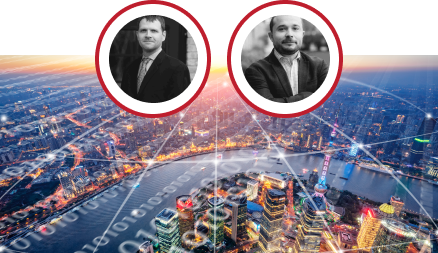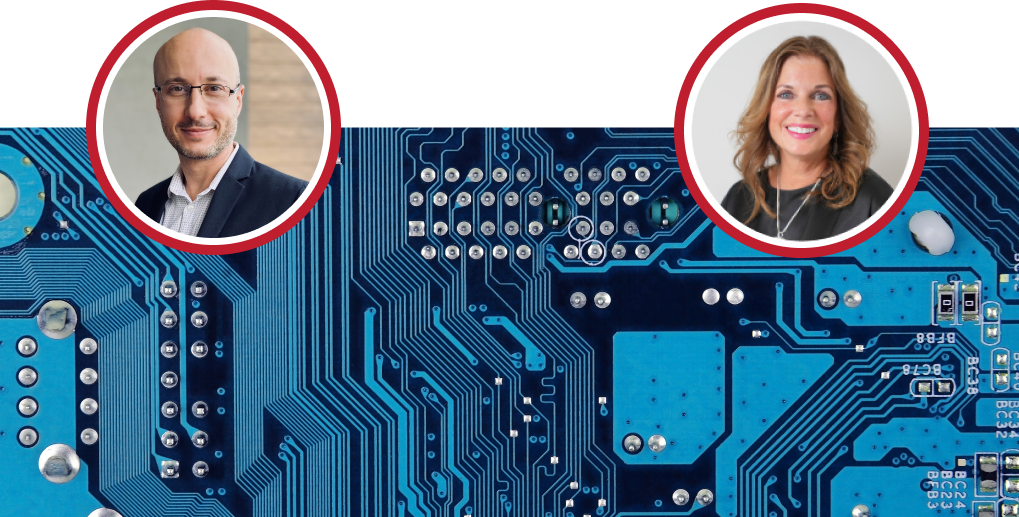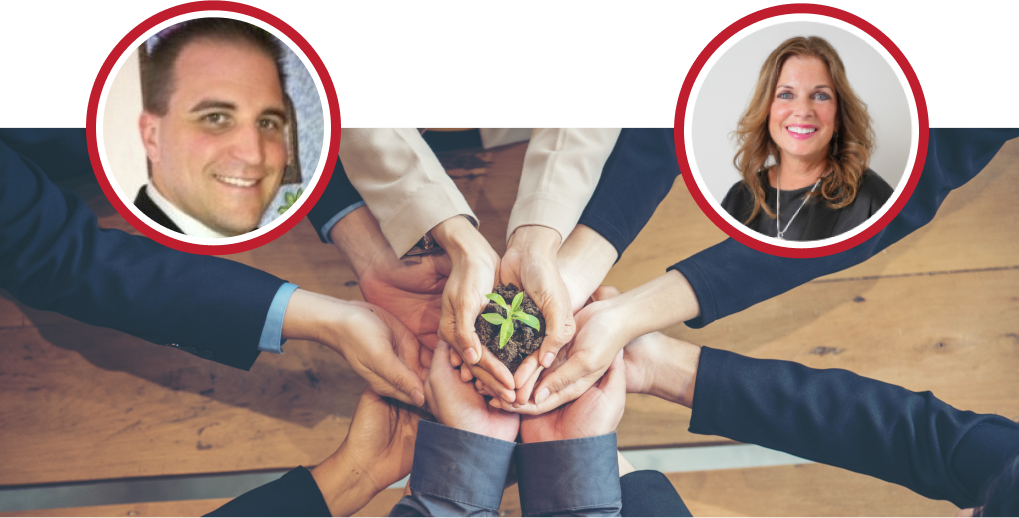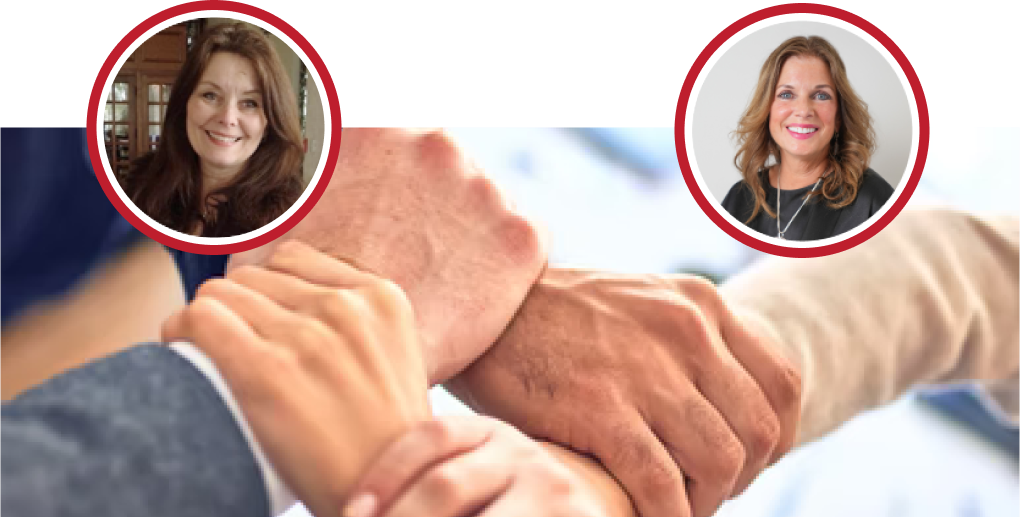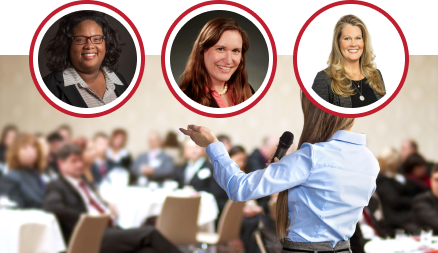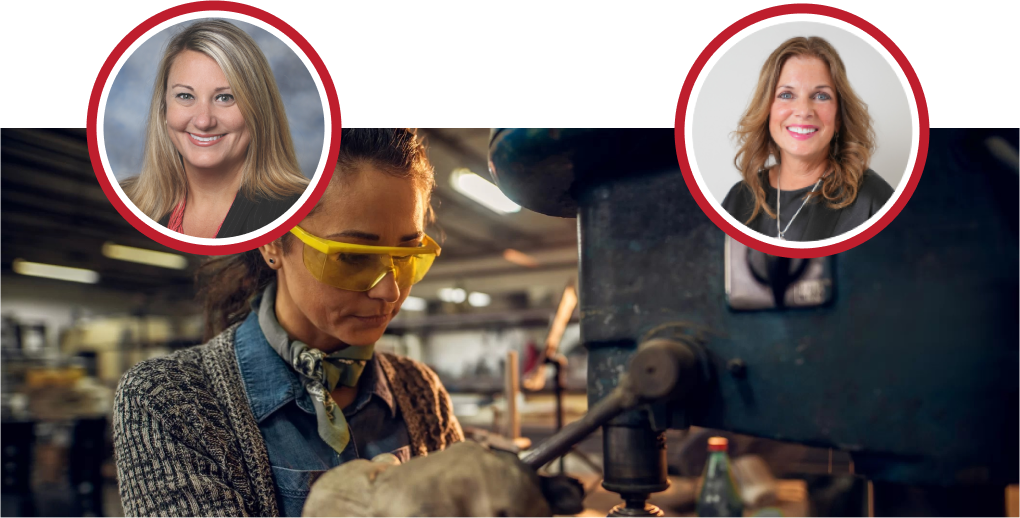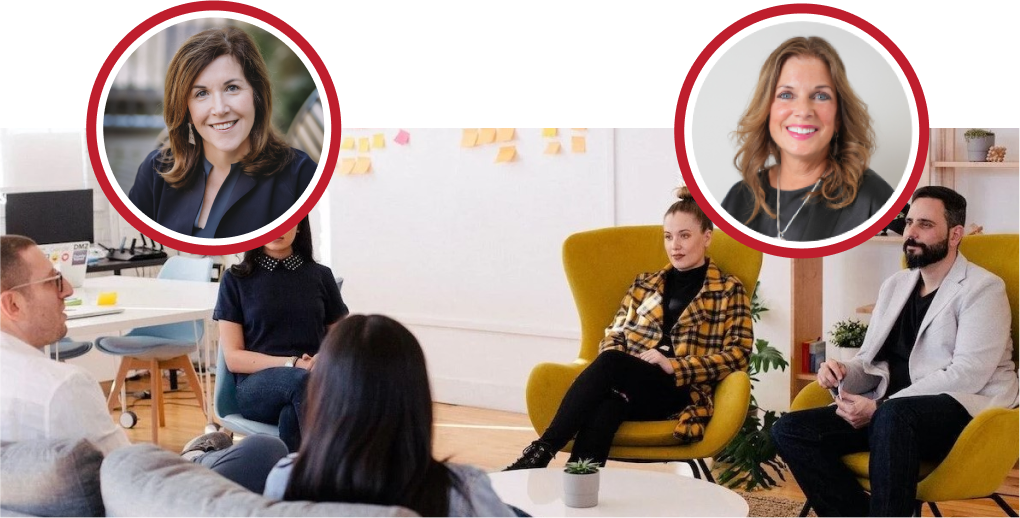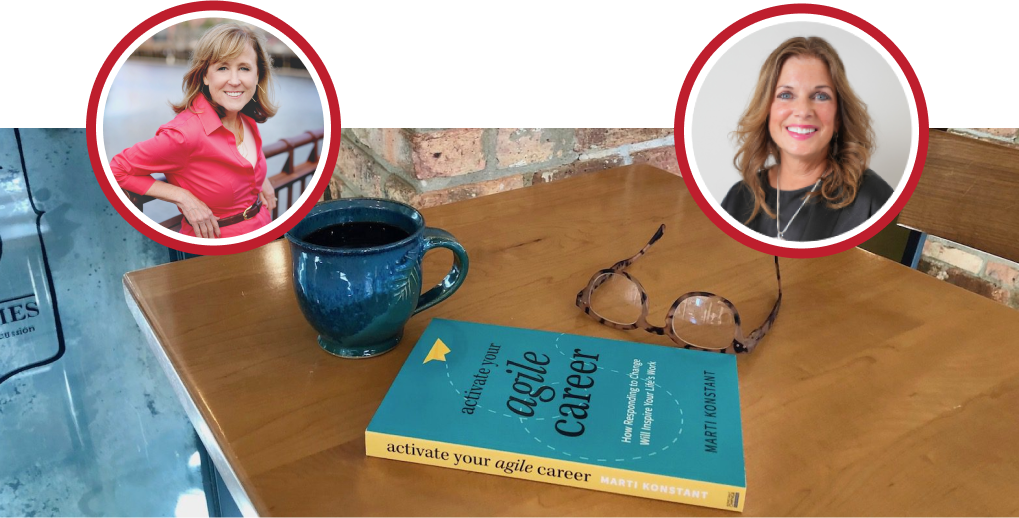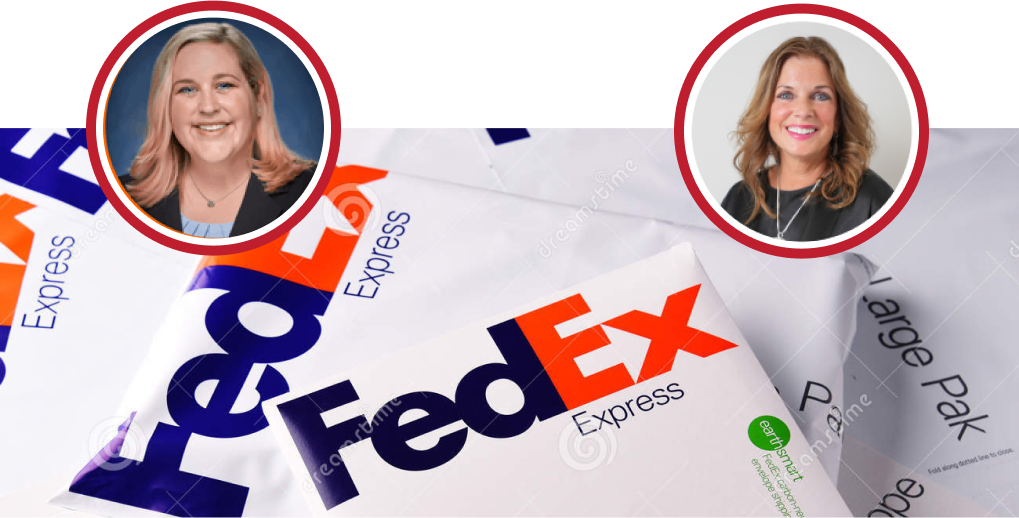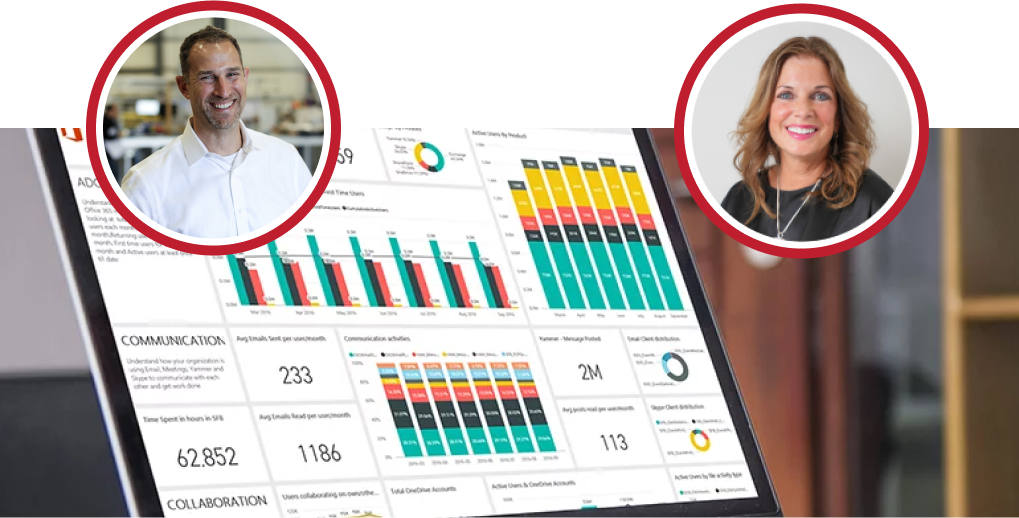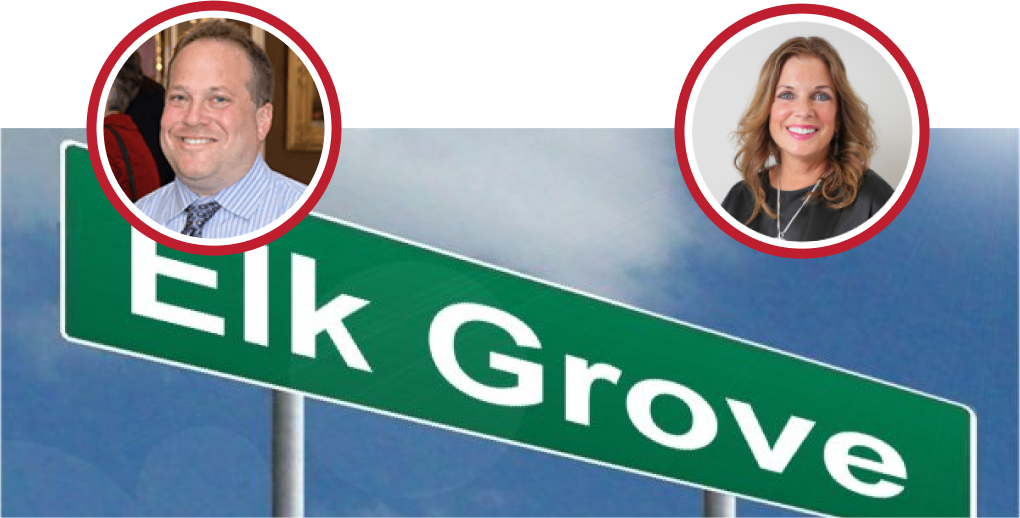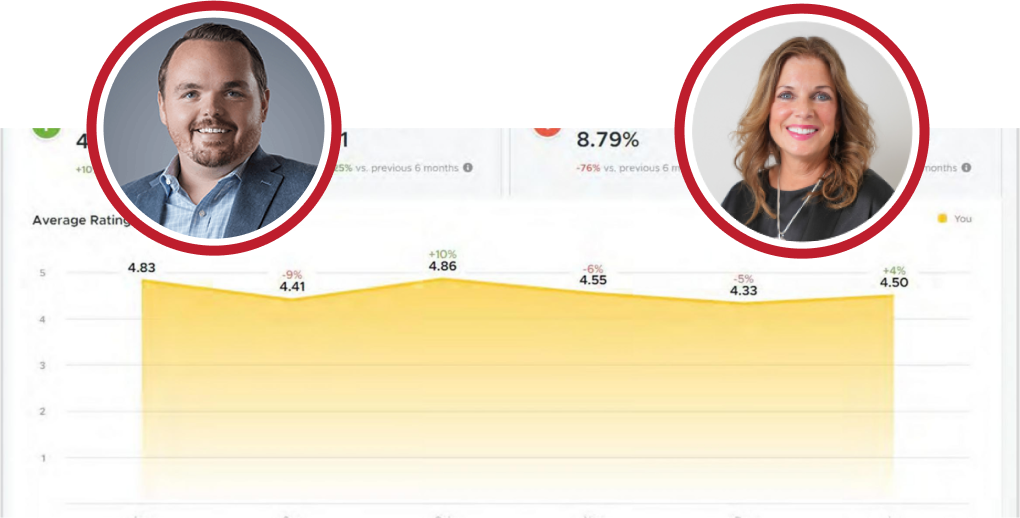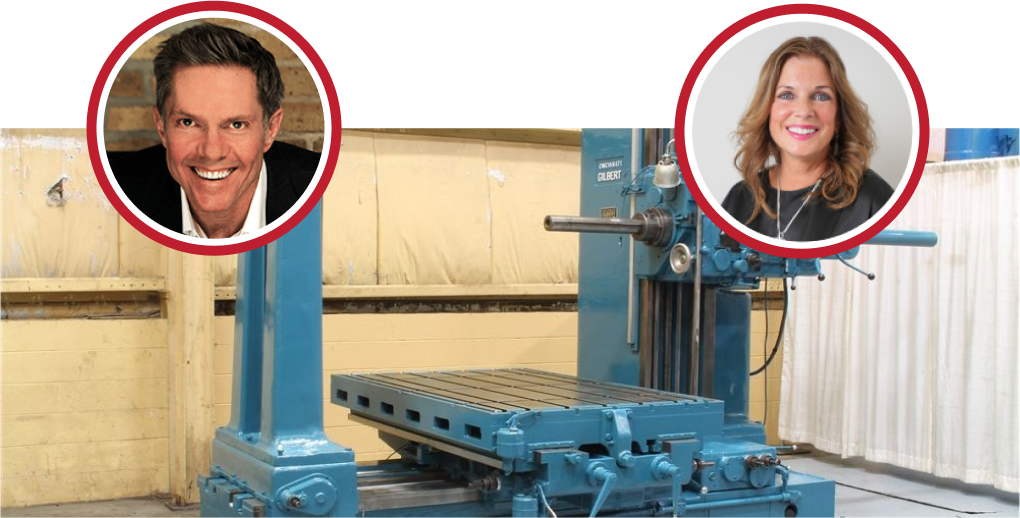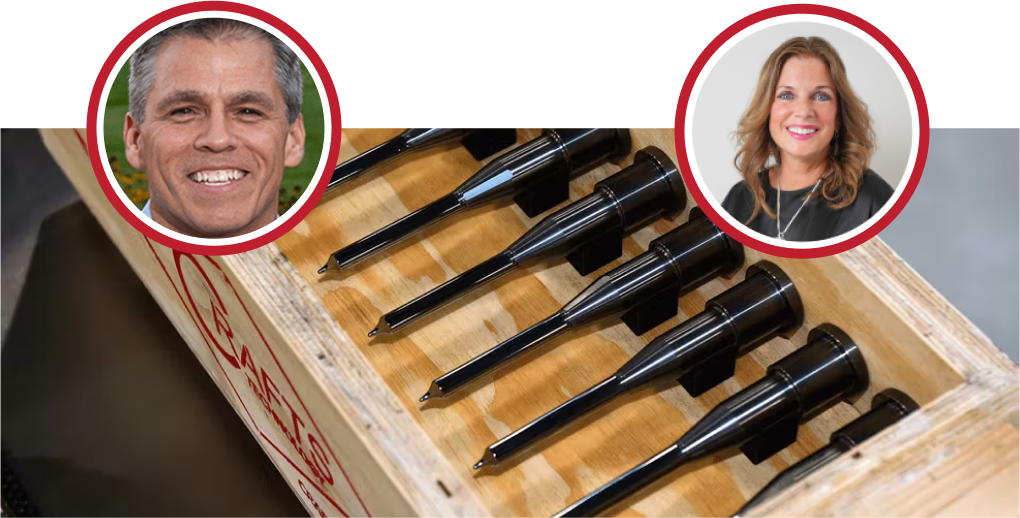Kathy: This as unusual we’re going to get started in just a few minutes but wanted to give you a little housekeeping update if you have questions feel free to add them to the chat and I will try to get to all of them during today’s session this is a really meaty topic so you know encourage you to add your questions in as early as possible so I’m Kathy Steele and I’m the CEO of Red caffeine and I’m your host today if you haven’t heard of us before if you’re unfamiliar with red caffeine we’re a growth consultancy and it’s our mission to build badass brands that people want to work for and with and today we’re going to stop talk about a topic that’s been stealing a lot of Limelight recently artificial intelligence so AI isn’t exactly really a newcomer to customer experience or marketing we’re all familiar with tools like Siri and Alexa and you know some voice assistants or customer service chat Bots that we’ve been seeing have been using AI technology for a long time but the buzz these days is really about how AI can be a game changer in shaping customer experience service and marketing we’re talking about you know the real kind of the new ability to craft convincingly real content in a Flash we’re just getting the grips on the Colossal impact and potential of generative Ai and and you know just this morning I was looking at something that had been generated by AI um to kind of roll up a quick concept so it’s really fascinating how much it’s integrating into our day-to-day uh already but all good things um do have their downsize uh we really can’t turn a blind eye to it if we start putting all our trust in AI generated content without some human oversight we risk inaccuracies spreading misinformation and even having some really strange interaction I’m sure some people have heard about the chatbot that fell in love with the New York Times Reporter that was a pretty funny story uh but just a few weeks ago more than 350 execs data science I signed this open letter released by the center for AI safety um a non-profit organization and that’s stating that mitigating the risk of Extinction from AI should be a global priority alongside other societal scale risks such as pandemics and nuclear Wars so there’s a lot of you know I don’t know how you feel about this Alana but there’s a lot of you know negative content out there about AI as well you know putting some scary predictions about making sure we’re really good stewards of how we’re using these new technologies but today as I mentioned I want to introduce you to our Guest her name is Alana whites and she’s a senior partner in digital Commerce practice leader consultancy quite a mouthful your title is not. Still, it’s because you’re such a, um, you know, uh, expert in the field. She brings a sense of knowledge and expertise in D to C, B to B, and B to B to C E-Commerce with a passion for driving growth and enhancing customer engagement while increasing profitability through digital platforms. Her colleagues know her as the dot connector. We love that we always say that’s like the secret ingredient for our employees, too. So, a lot of specialists in building processes and structures to style business problems around speed-to-market content creation pricing and supply chain visibility to drive customer adoption. Hence, we’re so pleased to have you here today.
Alana: Thank you so much for having me.
Kathy: Yes, and I always like to ask a little bit of a warm-up question; you know, we should introduce your bio. It’s on all of our marketing materials, but is there something that’s not on your buyer that you can share with our guests today?
Alana: Sure, I mean, I think probably just my love for all things uh digital and commerce and um the whole end-to-end process and how customers, whether it the lines blurring, you know, it all comes back to the customer experience, and I find that fascinating and how that continues to evolve so the lines between really even consumer and customers so think of us as like consumers and consumers or customers in a business to business setting um my eye-opening just how much that the worlds are blending and really how much each side of the coin if you will, is really borrowing and learning from the other in ways that I don’t think people necessarily are always um aware of and as I continue to learn and be exposed to that it just makes me love the field that much more so.
Kathy: Yeah
Alana: It’s just out on that stuff, but.
Kathy: It’s so incredible, I think, you know, especially if your business is focused on, you know, really building that true relationship with your customer if there’s an ability to add this personal experience or really meet their needs in a way that you can’t really scale with you know humans alone I think the potential is really incredible to add Automation and some you know some new experiences without suffering um being you know a high-touch uh experience as well so really excited to dig in today.
Alana: Yeah.
Kathy: So, I want to kind of start at the very, like, high level by, you know, having you first, like, walk us through just defining the difference between AI; there’s a lot of terms, you know, out there large language models generative AI can you just sort of set the table with giving us some framework about our means.
Alana: Totally, and I think you touched on this, um, as part of your intro, Kathy, but AI is not new, right? I mean, there’s Alexa, there’s Siri, there have been algorithms, mathematical equations um in the retail world, for example, for our ages, so as long as Commerce digital Commerce e-commerce has been around and the notion of product recommendations or what served up to you like early personalization like we saw you looking at this and you might also like that.
Kathy: Right.
Alana: Those are all early versions of, um, AI. I think the big kind of shift has been up to this concept of generative AI, which is um now uh smarter, for lack of a better term, and more trying to imitate and replicate the way our brains work and take so much data and process it so when you think about like chat GPT um and things that are more now content generating in a way that um that our brains might think of things that’s what’s new and that’s where the big shift has been um, and I think that’s where some of that negative press that you were talking about also is coming into play because if we can have chat GPT write a proposal for us or write a speech for a wedding right.
Kathy: Exactly.
Alana: Where do we come in um and the llm the large language models as part of that generative um um AI component, but it’s a type of artificial intelligence algorithm that is that deep learning techniques and takes huge data sets to understand and predict, but it’s getting smarter right so old school algorithms we’re supposed to get smarter with more data, and this is just taking it to the next level.
Kathy: Yeah, I mean, I think we’re seeing a lot of time-saving but not actual human uh, you know, out of the equation you’re still you still need to review things and fact check and stuff like that, but it’s definitely uh allowing us to do more analysis versus spend time on some research aspects that we would have had to do way more manually in the past about customers experience you know specifically you mentioned you know um chat Bots but what are some of the other ways that you’re seeing like the use cases for AI and just customer experience.
Alana: Sure, so um, whether at work or in general, like how I think of things is the full customer Journey or Commerce value chain, if you will, everything from driving traffic through um through to uh purchasing and post order support so when we think of marketing and um I don’t know if Parker is able to flash up the first slide there.
Kathy: Um, yeah.
Alana: And we’ll talk a little bit more about the why as well because I think that’s an important thing, but um, when you think of Marketing sales and service or driving traffic to the making the purchase decision to post order support or post-purchase support you’re seeing AI creep up in each of those steps in different ways I think the most prevalent and most visible to all of us right now is that chatbot um so from a customer support um inquiries, they’re, you know, trying to um uh answer questions so that you don’t have to wait for it to speak to a live person. Um, some are further up in the apparel space that I’ve seen for their Upstream.
Kathy: If you will.
Alana: um, around, I’ll call it, client telling and helping with products like picking out outfits and product recommendations um in the apparel space, um content creation we’ve talked about in the marketing realm um, and then getting into even customer segmentation um and data analysis so I think what I want to call out here is the importance when you think about using Ai and understanding why and one of the big things that um for the group here today is understanding the why you want to use it and then go from there because um it is a very talked-about subject and can you know be the shiny object but understanding how it ties back to the customer Journey the customer experience that you’re wanting to deliver and wanting for your customers is of utmost important I think that can drive how you best use AI for your organization.
Kathy: yeah, so uh, you talked a little bit about, um, kind of client telling now is that where people are actually able to kind of try on clothing, I just I’ve never heard of that term.
Alana: okay yeah sure I mean client telling um uh is I’d say um uh about uh giving more in an omni-channel setting but can be you know in a business to business setting equally as well Bridging the Gap Bridging the Gap between um a customer interacting with a digital platform and tying them tying to a live person so in in a retail setting it was initially come up with how do we give store associates or in a B2B setting your sales reps away to still interact with the customers and provide recommendations and personalized experience but leveraging digital channels so you might have a way to push products to them or send recommendations it could be you know Nordstrom those are my boards that you can your sales person can put an outfit together for you and you can um and just shop from there right but then the sales person still gets the credit and I think about in a B2B setting which I believe most of the audience here today will be um and going back to the why we’re using AI it’s it’s trying to solve some key business challenges maybe around cost to serve right where when you better understand your customer segments um and want to maybe reduce costs to serve for some of your lower volume lower profitable less profitable clients right you might start shifting to more of a digital model um the customer segmentation of course and understanding how you want to do that segmentation or even augmenting or Shifting the role of your customer support staff or your sales staff so that they can become more consultative and less of order takers right so that’s all of these are kind of going yes less reactionary and more of let’s grow the size of the pie and so um and so I think all of these are challenges and business questions uh opportunities if you will that folks are trying to solve and then how to you can leverage AI for any of or all of those at different points is where the fun comes into play.
Kathy: yeah, and I mean I love that you start with why because I think you know with anything you’re you know you if you just start building without really understanding what you’re trying to get, you’re not aligned on the outcomes, you’re really looking for so talk a little bit about some of you know we mentioned a few things but what are some of the most widely used Technologies in customer experience and marketing and why are they.
Alana: sure, I mean, so um, you know the big guys and the playing field Adobe Salesforce, they’re all using, um, some form of AI, and their products, um, Adobe Sensei, for example, um, or if there’s a new generative AI-powered uh Firefly there’s Salesforce Einstein just thinking here um you know a newly announced AI sorry cloud service um for marketers to enact and enable things like next best action or building personas um those are what the big guys are trying to incorporate into um their platforms and offerings today um uh but powering those from a CX perspective um powering the journeys powering the personas um through digital experience platforms and such.
Kathy: Yeah, I was really I, you know, I actually we did a session just a few uh just last month on personas, and I was super interested in how you know that you know how well those buyer Persona Technologies are performing have you had an opportunity to Leverage you know do you feel like they’re they’ve come up with some pretty accurate results.
Alana: You know, I personally, actually, to be transparent, have not.
Kathy: Okay.
Alana: um, again, I think these are newer to the market, um, and so uh, you know everybody, um, both on the supplier and the uh integrator and the customer side, I think they’re still navigating and figuring out how to um align the technology back to the why right and um I also think to your earlier comment on you know there’s that fine line of skipping ahead, or you know harm versus health, and um you still want to do something that’s going to be helpful to your organization or to move your business or to build your customer Journey or personas at versus just skipping ahead, and I think there’s; still we’re a little bit nascent in that in that understanding.
Kathy: no, and I think you and I talked a lot about it in the prep session; it feels like every day you open an app, and there’s new AI embedded in it, and you’re just trying to figure out how does this really apply to my you know daily tasks or is it going to increase my productivity, but it’s I still feel like everything is such a huge experiment you know a real sandbox approaches likely best for right now because there’s just so much you know there’s just so much for us all to learn it feels like we’ve been drinking from a firehouse in the last Maybe 12 months around this topic and how accessible.
Alana: and I think accessibility is a great thing to point out, um, because we’re all, um, I think we’ve all interacted with chat Bots, for example, in some way, shape, or form, um, and they can be great if you want a very standard answer right, but once things start getting more complicated and you feel like you’re stuck in a loop of being asked the same questions right over and over again right so then it starts to become a negative customer experience as well, or you know you get angry people who take to Twitter or other social media channels saying you know I couldn’t get this answer or what’s wrong with your customer service or I got you to know and so um and so I think it’s exciting, but also you know thinking through the operating model which I can talk a little bit more about later but how you’re going to enable your organization and still meet the needs of your customer is equally as important as having the ability through technology to do so.
Kathy: Right. I mean, we’ve still got, you know, a handful of clients that are like just newly leveraging CRM, so I mean it is it’s definitely a journey, um, in how you’re applying technology and then, you know, AI as well into those workflows I think it’s you kind of meet somebody where they’re at and then be able to just layer on things um you know as you get used to using these tools and Technologies so.
Alana: yeah
Kathy: I know the next slide, you had like some examples, but you wanted to kind of talk through maybe a case study where it has improved customer experience and what were some of those success factors.
Alana: yeah um so uh uh there was um a uh and again well before I jump into the the case study um just wanted to um just I guess reinforce or reiterate shifting from a technology driven approach which is I need to incorporate AI or I need to I need to do this thing because we need to have the latest and greatest and then fitting everything in your organization or picking your goals or operating models to fit the technology you’ve got um as opposed to a customer experience driven approach which is really aligning within your organization again on that customer Journey that North Star what are the kpis you’re seeking you know wanting to improve or start capturing and then selecting the technology that’s going to best help you get there because there is a lot on the market right um and I think it’s all great but it’s not a one-size-fits-all proposition I always joke right I mean when you go car shopping somebody who lives in an urban area might need a different type of car than somebody who who owns six cars and lives in a rural area or all of the different combinations and permutations um and that can lead to very different types of decisions um not just you know the newest year model or the fanciest or whatever it might be um so case study um so we um had an opportunity to work with a a major Telco um to use digital twins which is another use case for AI to simulate customer perception and likelihood to move to different plans and different rates um as an example and see what price you know elasticity and price sensitivity might be um also we simulated customer Journeys to track back to specific buying patterns and behaviors find those abandonment points in the journey and try to prevent them in stem attrition from customers so I think that was a really interesting and relevant uh you know use case that might not seem as obvious um in terms of what people are thinking about with AI because we are just hearing about chat thoughts or chat GPT but more from uh I’ll call it behind the scenes Data customer segmentation understanding the customer perspective.
Kathy: so in terms of, like, when you’re automating marketing Communications embedding AI to serve up the right or roll up an answer is that kind of because I so when maybe just even stepping back to explain what you mean by a digital twin.
Alana: yeah, I mean, I think one way you could think a bit about it is, um, kind of in very when I say old school but think of a b testing um which anyone who’s run a so I’d say at a lot of ways it’s an A B testing environment or concept where you’re you’re testing out matching two scenarios but seeing how they the one works differently so I think that would be the best way to um and it’s not just you can do it for marketing it’s always been very prevalent in um supply chain for folks on the phone which work in the supply chain um from a warehouse and Logistics um perspective but that that’s the concept of the digital twin.
Kathy: Okay, got it; we did get a question. I think this is an interesting one. Do you think that there is a responsibility for companies to be transparent about when and where they’re using IAI? Uh, he’s referencing Ryan Reynolds when he used chat GBT to write the Mint mobile commercial earlier this year?
Alana: But that is a good question, um, I’m stumped on that one, um.
Kathy: Yeah, I mean I, I guess I guess I guess.
Alana: yeah, my, my first thought is they don’t, um, at least at this stage you’re still you a person or a company or an employee of the company is still feeding the data right so um, it could be akin to I have a team that I work with if we’re putting together thought leadership or proposals or even authors who might have a Ghostwriter or someone helping them write, and they’re providing the storyline the story arc the content, and someone’s putting it together you know that’s not always something that um it said I did all this and you know you might give acknowledgment to your team or you might say as a written by or but I don’t think that’s much different of a concept you know a concept particularly if it’s intellectual property coming from the person or the company.
Kathy: Right, no, I would agree. I think we’re, you know, you’re seeing people showcase examples because it feeds into the conversation, and it really, you know, makes it more relevant there, and I think that was Ryan Reynolds’s intent. I’ve seen it done by other marketers as well, kind of showcasing that they’ve used AI to write something and how accurate or inaccurate it is just to prove a point um. Still, I would agree if you have something else written, you don’t usually say, I didn’t personally write this, but I’m going to take credit for it. It’s not, you know, it’s I don’t. I think about it in the same way, we’re not telling clients how we’re making a mod, you know, a marketing automation Journey. Still, we’re talking about the touch points that the customer is going experience through an automated sequence, so it would be just like the stuff they probably don’t really care about.
Alana: because I still feel, um, and this was proud of business example but a silly example, but I was playing around with chat GPT for my brother’s wedding a couple of months ago, right, and so the prompts that I gave were very specific to my brother, um at the end of the day so I know I would imagine if you and I both said you know I had the task of writing a wedding you know the sister of the groom speech given our relationship with our family with our brother and any other context that we were going to feed as those prompts you come up with two very different speeches at the end of the day so I think it’s it’s again that becoming more human-like and incorporating that augmenting or enhancing but not um at least not at this stage thinking on its own.
Kathy: Yeah, I well, I think one example of this, and we’ll move on, but the recently used um AI to kind of generate um a just kind of some research, and so we just like we would include any other if we’re quoting uh something from a McKinsey report we would use our source, and so we know conveyed that we used an AI to do some of the research, but we were really responding with the Insight on that research so I that was a use case that we talked about with the client but wouldn’t necessarily give every circumstance that we’ve used AI to generate something so in terms of like kind of getting on to the next topic what has AI been able to enhance other personalization and marketing and customer interactions.
Alana: yeah um I’ll go through a bunch stop me if they’re I can’t I can’t see the questions or if you want me to we want to land on one to talk more about um but uh I think right now it’s um a new way for collecting and structuring customer interactions and engagement data today um you know that’s because companies are collecting data and I think um you you said I will re-enhance that a lot of people are sitting on a lot of data that they don’t know what to do with or how to use um or don’t have the right data um necessarily and so um using AI to help collect and structure that data um could be a huge opportunity for future growth um personalized experience personalization another term that’s been around um much like AI but um but leveraging that based on past behaviors is key um so today that happens most often in very manual process heavy ways through audience segmentation and journey orchestration measurement of performance for optimization um and uh there’s a lot of suggestion suggesting from current AI but is it is as it continues to be more mature I think that there is a there’s a lot of opportunity there um to be smarter about what we know about past behavior and how to Parlay that into um that whole notion of part personalization um do you want to stop do you want me to keep going.
Kathy: Yeah, no, a couple more examples would be great. I know things that come to mind for me I for you know we I would love to see us being able to leverage AI and like lapse customer Journeys where right now that you know if the data is in two separate systems, sometimes we’re having to pull a list and then put you know personalized Journey together. Still, it would be incredible to be able to have that, you know, performed because it feels like it’s like not a good Hume use of human time to do those kinds of activities.
Alana: I think that’s a great point, so AI and machine learning, you know, it provides, and we’ll continue to provide, the ability to go through a lot of data to form accurate pictures of what your customers are doing, um, but much like the example of the wedding speech or however you want to say it you have to know, and this goes back to the why and the what right what are the questions you’re trying to answer um what do you want to measure, um before you get the data so that you know what you’re collecting is going to put you on that right path right or how to structure it and I think um again that’s where you don’t want to run off too fast and just go down the technology rope but go back to what are some key opportunities that I think are untapped which AI could help you with as well or what are you trying to answer and then leverage AI accordingly to help you get to deeper levels of understanding that you may not have been able to before, um, the data that’s collected around customer anal, you know, customer interactions really can now be analyzed to detect what customers want and when and you can personalize their Journey um based on desire and intent signals um so it’s delivering what they want with less attrition greater loyalty lower response times the lower cost to serve all of those things that you know help your p l as well. Still, you need to really think about again tying it back to those KPIs and some questions, and I can’t really emphasize that enough because that’s often a skipped-over part.
Kathy: yeah, right I mean, I think that’s, you know, some of the fear that’s been posed to us from clients or, you know, really removing that high touch personalized um response that they feel when they actually talk to somebody on their team but there’s a lot of low-calorie activities that really don’t warrant that high touch experience that could be you know could be done with a bot or you know with AI and it feels like being able to really think through all those different use cases and then start to put a plan together to automate what makes sense and you know give more time to solution conversations um subject matter expert.
Alana: I think it’s also what are you missing or not capturing through human interaction because we are all human, um, or we might be in, you know, if we’re in a call centre or have just sort of a routine response or you know you get kind of into a rhythm of okay let me get you over to this department or here is my here’s my script right then you almost forget to note down maybe those interesting data points that can further that you can leverage to take a look back and say where are the efficiencies or where are the enhancements or what pain points do we need to solve so um you know you’re really solving you know it could be two birds with one stone in the sense that you don’t need such you know such a high-cost way of responding to all customer inquiries and at the same time it allows you to capture data points and insights that you might lose just by nature of you know the kind of being enough routine type of mindset as a person doing that type of job.
Kathy: Exactly; we were just talking about this last week presenting some buyer Persona, you know, um information uh to a client, and you know it shouldn’t just stop; there should be some way of continuing to build on the insights about those personas and their you know preferences and their barriers to um to purchase and with you know with some type of automated tool that allows you to you know to create those nuances and use cases that weren’t really gathered in those first interviews without always having to go back and re-interview people so I think there are just some great base cases that get can be developed and then built upon by you know having that additive so in terms of you know thinking about what’s really kind of a hot button topic as we’re you know in a more recessionary time we want to be able to really make sure that we’re managing customer relationships and improving our, you know, uh, the loyalty we have with the existing customers, so can you speak to, you know, some things that you see in that realm, like around customer loyalty and retention?
Alana: Yeah, um, so again, I think that next level of um deep understanding deep analysis um where past purchase behaviour um abandonment attrition behaviour [Music] um, you know, the AI machine learning how they want to call it, yields new ways to optimize um loyalty and see things from different lenses um I think as you were just sharing your last example um it also reminds me of you know uh being in a meeting with a bunch of people and then debriefing afterward and everyone heard something a little different or maybe picked up on um something that someone said that you may have missed right so um AI I think provides a great way to capture all of those and bring them together um and as you were just talking and I was like maybe that’s a something that will resonate with folks.
Kathy: I totally love that because I’ve been, you know, trying to leverage it more for capturing meeting notes and like that to-do list, and I agree. I know it never
happens in any meetings that I’m holding that people are always completely clear on what they’re to do next, but you know I’m the best of it for the rest of the Universe. I think that would be really useful, so we did get a really great question from somebody in one of our attendees what are some of the business goals that are supported by AI, you know, at kind of the top level I. They were asking, like, should we be setting things like freeing up resources, cost savings, um, what are some of the other business goals that you know you’ve um heard as you were planning on leveraging AI and some of the projects you guys are working on?
Alana: yeah um so for sure and I think what we’re seeing again that’s what’s most prevalent and invisible right now um is more in the realm of customer service so I’d say things like cost to serve um better understanding well starting with customer segmentation and that’s where the Journey and personas come in which then in turn allows you to evaluate where you can reduce cost to serve for those groups that are less profitable um but also identify uh opportunity areas so there might be a customer group that is untapped right that could yield more profits that you might be overlooking or hadn’t seen as a viable category before um the and it’s part of that concept of cost to serve is also the role of your sales reps or your call centre agents Etc there’s in all of these I think there’s both Top Line and bottom line opportunities um to right size right so it’s um you know for easy to answer questions that might not require that high touch hand holding right you send somebody to a chatbot and um you know if x percent of the time it answers their questions and you’ve freed up your agents or account reps to work on the more complicated ones likewise um uh those folks can sales reps can work on going after new accounts or growing an existing account and spending time in a more of a consultative role versus troubleshooting or order taking or tracking an item or anything along those lines so you know it it’s not just a cost savings bottom line thing I think there’s a lot of upside opportunity as well which shouldn’t be overlooked.
Kathy: Yeah, I’d love you to talk a little bit more about, like, some of the sales data; what other things do you see, um, use cases for in terms of, you know, the sale process?
Alana: Sure, um, so uh, I think marketing campaigns would be another great uh example; so um, in terms of optimizing and evaluating your marketing campaigns, there’s Journey, you know, using it for Journey orchestration and optimization in the midst of a current campaign in progress to help increase performance um so Drive response rates or you know whichever Roas or Roi um again using that digital twin to simulate actual customer performance sorry if I don’t open up for a minute um you can test campaigns risk-free um before Fielding with actual customers so I think that reduces your risk and enhances that you meet any KPIs that you’ve set out for a particular campaign um, particularly if they’re seasonal or for a new product so you’re really setting you can never promise anything or ensure anything so I try and stay away from those words but.
Kathy: right, but still, you know.
Alana: hedging your bets, hedging and positioning yourself to optimize and capture right the best results possible and more importantly to um more easily and um the agile in how you respond to what’s working and not working which um today in our world of you know you can change something on a website within moments right um there’s a fast response time that whole notion of speed to market and being quick to respond to what’s happening is of utmost importance.
Kathy: that, you know, absolutely. I just love the ability to be able to test and iterate more, um, you know, within a campaign versus waiting just for six months to go by and really see a campaign of performance; there was another question, so I think this gets into integrating it into the customer experience um because there is still a lot of fear around you know some kind of mishap or a chatbot um Gone Gone Wrong a conversation what are some of the things or best practices that organizations are putting in place to oversee um these automation efforts or these AI efforts Within.
Alana: actually, um, and if we could flip to the next slide, um, and this doesn’t totally answer the question but just to set it up, um, really understanding how to incorporate something like AI into your full organization um, so that you have the governance that you have the right people and roles in the right places is really critical um and so a lot of often I work with my clients on defining their target operating model um and that’s you know if you say how is your organization ready to enable AI um part of that is to be able to handle any issues that come up just like uh anybody that has any kind of digital portal e-commerce platform you have the right people in places when something’s out of stock, or the site goes down, or you sold you’re selling something for 9.99 when it’s supposed to be 9 000 or 99. um and so you know within the operating model and usually look across seven dimensions the people and organization do you have the right skill sets folks who um the right roles and skill sets who understand Ai and how it could impact the entire ecosystem of your organization have you defined processes not only for setting up Ai and enabling it for our marketing campaign or however you’re going to use it but then um to the to the question here right um who’s who’s in charge when something goes wrong and what are the processes or steps to respond or to escalate um you know along those lines um of course then we look at the technology um piece which we talked about earlier and which which platform which which technology is right for your organization the governance right so how are you constantly taking a look uh not only at how you’re responding to issues but how you continue to leverage it or add features and enhancements or make sure that you’re capturing the the benefits that you were set out to based on that customer experience or business goals um those kpis and then how you’re delivering it what how are you pushing AI out to your customers and delivering that so um so a little bit of a long-winded answer to the question but more holistic in that I like to work with my customers to say like it’s not just how are you going to respond when something goes wrong but how are you setting yourself up setting the foundation in your organization to really to really be able to successfully Implement and scale AI or really insert anything that you’re trying to do.
Kathy: yeah, I mean, I remember when you know marketing automation, the terminology came on, you know, the Forefront, and I feel like so many people thought it was going to be like I press a button and it’s like automate all my marketing, and it’s going to be so super simple and easy, but it really is about planning, and you know planning for best case worst case scenario, and um you know just understanding you know the tools technology the people and the process that you’re going to need to employ to you know to really have a good program in place and it’s a lot more complex than marketing automation terminology really leads everyone to believe so I’m glad you know spoke to how you know the best case scenario gets set by you know a lot of upfront planning and um and orchestrating before you’re adding some of these complex Technologies to your marketing campaigns or customer service response.
Alana: yeah, um, it’s that’s really, um, maybe not the most glamorous part of it all, not the part where we get to say we have the latest and greatest um AI capabilities or AI platform, but um, you know, it’s of the risk of sounding a little cheesy it’s it is the secret to being successful at the end of the day is thinking through these foundational elements um so that everybody in the organization knows how you want to respond or at least has a framework for reacting or decision making um otherwise you just kind of are off in all of these different directions.
Kathy: Right, and I’m sure that you found I I know that we found that it’s kind of a journey we’re layering on these enhancements these Tech enablements um into uh customer campaigns they’re not ready for everything possible typically they need to be eased in to uh to using and leveraging these new tools so I think it’s just it’s you know it’s a constant journey I love the idea of all the things that we’re going to have at our hands but you know it’s like you can’t it’s like getting dressed you can’t wear every piece of jewelry that you own so you probably shouldn’t have your Tech stack use every you know option that’s out there.
Alana: Totally.
Kathy: so before I ask about what you know the future is going to bring and open to the crystal ball, I did want to ask, you know, the question that I think people are really concerned about: how is it going to impact job laws you know people are very fearful that technology is going to take over their job what’s your thoughts on that.
Alana: so kind of um going back to this notion of the operating model and looking at it as growth opportunity um I think it well well first of all I I can totally understand and appreciate because um you know if I am a somebody in a call center or an account manager and all of a sudden they’re like well we’re gonna take this portion of your customers or this part of your job and you know leave it to AI or that person can now shop online and they don’t you know they don’t need you anymore like that would make certainly make me feel very uncomfortable um ideally and thinking through these type of operating models you know you’re considering how to then leverage your your folks your Associates of talent that you have on hand more on the upside right so um now that we’ve identified the customers that maybe aren’t as profitable or don’t require um as much hand holding right you can go find but let’s focus on how we can help you find more of the ones that do where maybe you’ll earn more commission or you know can grow the size of your business and then there’s upside for you and the company and everyone’s a winner but I think that is something um that you have to have alignment in within the organization and hopefully you know from leadership down um see AI is how can we take away the stuff where people are spending unnecessary time that’s not helping us grow and shift to um to a mindset of what activities and where can we be focusing on growth and then leverage those folks in the right roles to help be part of the growth.
Kathy: yeah, I mean I I, I feel like as texts enabled us to do more with less, it is kind of that building process; it doesn’t really eliminate your role; it eliminates maybe how you do certain tasks, and you’re able to do the I think the thinking part a lot more.
Alana: Yeah.
Kathy: versus the doing part when you’re able to add technology into the equation, so I mean, we’ve been through so many generations of fear over a job replacement by machines, and so I’m sure we will find a way to still be employable in 10 and 20 years from now so.
Alana: Yeah I mean I think the not a B2B case but I think the retail industry if you look at that is always a couple of steps ahead when it comes to emerging Technologies and that certainly is an industry over the past you know even pre-covered has gone through much of a Renaissance right um you went from all in store to you know all of The d2c Darlings to this concept of omni channel to um the insertion of clientele which I was talking about earlier so how do you still enable a store associate or you know someone to connect with the customer or consumer at different points in their Journey or meet them where they’re at whether they’re in the store or back home and want to complete a purchase later and so I think it’s fair to say you know it’s I don’t see a point where a physical store is going to go away you know it’s a little bit of a swinging pendulum and we certainly went to the extreme D to see you know everything online for a little bit but you start starting to see this pendulum swing back the other way and so if that you know those d2c companies are Now setting up you know showrooms if you will um so people can see physical product and so if you do agree with the notion that retail is you know um always maybe a first mover in a lot of ways and that they role of the physical associate or you know physical um stylist or whatever you want to call it is still there it’s just kind of more.
Kathy: Yeah.
Alana: It’s still right sizing, then. I think that is a good you know indicator that humans are not going to be entirely replaced.
Kathy: Right, and I think you know what you alluded to earlier is that the lines are so blurry, so even though retail experiences tend to lead the charge on where we’re investing or what the people are expecting, those same kinds of personalized experience in the B2B world too so how are we you know how are we taking what we’re seeing happen in our own buying experiences and really trying to craft those same types of high touch experiences with our B2B customers so.
Alana: And likewise, I think you and I were chatting about this in the prep session. I think people that people are seeing all the day, all the time, because we all have our phones, and now the customer expectations for Best in Class customer experience or the table Stakes are that much higher.
Kathy: Right.
Alana: If we can get this from Amazon, then we expect that from our doctor, or we expect that you know
Kathy: Right, exactly.
Alana: in a B2B setting, um, but if you start digging in, I think there are some pretty cool examples of the reverse happening like, um, you hear a lot now about buy pay later, so affirm and Farm after pay and that is really um initially a B2B concept if you think about it that’s made its way to the b2c world so they know not AI.
Kathy: But.
Alana: It’s not, but it’s becoming more of a two-way street than just a one-way video
Kathy: it’s definitely a blend, so before we, you know, get to the end of the hour, I wanted to give you have to just talk about what’s happening. I know it goes so fast; what’s going what are we going to be looking forward um to? What technologies are coming to the Forefront, or do you know what other things we should expect in customer experience?
Alana: Yeah I mean I do think um we’ve talked a lot about um customer service and I do see that you know the person to person customer service will continue to shrink I guess or be lower um you know as particularly as AI becomes smarter and has those like neural mode nodes and such to be more human-like um you know and hopefully that will be more of a good thing for everybody um and then so I think that and then I think the um continuing to build and expand on the notion of the digital shelf um and digital self-sorry um digital self has been around digital self so um uh you know the the notion that um it would be someone who can review and evaluate and conduct digital transactions um maybe signing up for offers or proactively finding products that match your interests um having a digital Shopper to buy your preferred products I see that um coming on um so um the example I would give is like if you imagine on Amazon um uh as a Prime member if you will um you’ve got a version of your digital self that does everything for you so you can give it different levels of autonomy to act on your behalf um ultimately, you get to approve every action. You can set low-level tasks, or you know your own business rules if you will, um, but if you’re allowing somebody to do a lot of that stuff for you and then only fill you in on what you consider, you know, bigger decisions or other sensitive transactions so I think that will be an interesting um advancement from an AI perspective.
Kathy: Well, I love it. I’m in; sign me up for the beta and have my digital self handle all the things I hate doing.
Alana: Yeah.
Kathy: all right well I know this you know we’ve only got a few minutes left I wanted to give the a chance to let people know how they can reach out to you if they’ve got any yes further questions so feel thank you so much for joining us today Alana I really appreciate it so if you have any questions for Alana following today’s session please reach out to her and put business as unusual in the subject line so she knows that you know she knows who it’s coming from or where you where you uh saw this content so she knows how to respond uh really appreciated your time and joining us today I want to tell everyone a little bit about our next guests that we’re up our next few guests but um that will be uh upper for in July it’s two guests John Jacob Jankowski and Bob Lambert and so what we’re going to be talking about is really how to increase sales revenue in a recessionary climate and so you know obviously there’s a lot of still uncertainty around where this we’re heading for the second half of the year so we’re going to be bringing two really great sales leaders uh to the Forefront John from sales acceleration and Bob Lambert from Samurai business group they’re going to share their decades worth of wisdom regarding the most important changes CEOs CFOs and other small and mid-market companies Executives should be adding to their bottom line in the second half of the year so some of the things that we’ll be sharing are ways to get your business development foundation in place so you’re prepared to take advantage of these future headwinds and why as I mentioned earlier why your current customers are you know super important so making sure that you’re taking care of them they are you know the lower hanging fruit as they say in terms of of you know getting more business or creating more enduring relationships so don’t forget about them as you focus on getting new like logos and then how to really engage your team um it’s as selling as like more of a team sport so it’s not just the sales team’s role that you’re really embedding a sales culture across your organization so really looking forward to having these guys on in July and if you go back Parker just to thank our sponsors Insperity HR store M3 learning really appreciate their support of the business as unusual series and then um we’ve got one last question uh how do you think uh this will unpack customers who prefer a face-to-face interaction do you think there should be an option given given to choose or could it be offered at a premium cost depending on the business got this was such a hot button tactic I want to let let you answer that question if you don’t mind.
Alana: Yeah I mean I think um kind of also building on that retail industry answer um I I don’t think you can ever totally eliminate the a face-to-face or human connection because I don’t think any of us um as consumers right um would stand for that without being entirely frustrated um and so uh I don’t think it’s gonna go away um people will always find a way to get a human or press zero um I think I do like the idea um actually um just like you can pick how quickly you want your package to arrive that if you don’t want to sit and even wait for um to go through the props and see if you get the answer that you are willing just like some people are willing to pay for overnight shipping or pay a Prime membership to say um I want the ability to skip skip the AI skip the that portion and take me straight to to somebody um and I think that’s a win-win because that’s a service somebody’s willing to pay for and also helps offset the cup you know those costs for maintaining that service which um you know going back to why folks are looking to use AI to solve some challenges around cost to serve Etc kind of makes it a win-win.
Kathy: I think it’s a brilliant idea as well. I mean, I think giving people a choice, um, about the experience they want; some people just do want to solve their problem in a more frictionless way online, and then other people have more complex questions that really need human interaction, so great marketing idea, so whoever who asks that question thank you that will be embedded into future client campaigns right Alana and red caffeine customers so right thanks again for joining us today we’re at the end of the hour thanks to everybody that joined us online we really appreciate your attendance and keep the questions coming in they thank you.
Alana: Yes, thanks so much. Everyone has a great day.
Kathy: bye-bye




